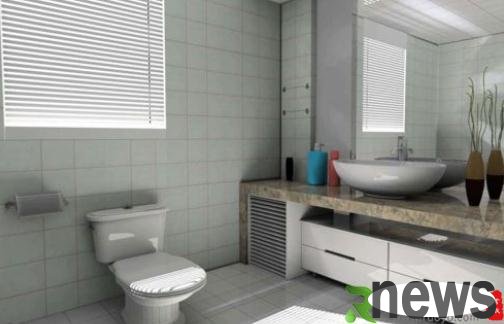The walls are too dirty? Let’s see how to effectively clean the wall! How to effectively clean the wall 1. Remove wall stains 1. For general wall dust, wipe it with a clean towel. If there are particularly dirty traces, such as black hand and Englis...

The walls are too dirty? Let’s see how to effectively clean the wall!
How to effectively clean the wall
1. Remove wall stains
1. For general wall dust, wipe it with a clean towel. If there are particularly dirty traces, such as black hand and English footprints, you can use an eraser to gently wipe them.
2. If it is a water-resistant wall, you can directly scrub it with water, and then suck it dry with a dry towel after washing. For walls that are not water-resistant, you can wipe them with an eraser or wipe them with a towel dipped in some cleaning solution and then wipe them gently.
3. If there are children's crayon graffiti on the wall, just dip them in a clean cotton cloth and wipe them gently to remove them. Because the cream contains emulsifiers, it has a good wax removal effect.
4. The stickers left on the wall should not be pulled off directly, as residual glue is likely to be left behind. You can use a hair dryer to heat it first, and then gently pull it off after the tape softens.
5. For special dirt with unknown reasons, you can knead bread into a ball to wipe it, or wipe it with old socks, sandpaper, etc.
6. How to remove soy sauce from the wall? Apply 1% hydrogen peroxide. When it comes to effect, you can apply it on a large area. Note: Concentrated hydrogen peroxide has strong color removal and corrosion. 1%-3% is safe. 2. Remove wallpaper stains. Nowadays, many people choose to paste various wallpapers on the walls. Once stains are stuck on the wallpaper, how to remove them? Please see the tips:
1. The stains on paper and cloth wallpaper cannot be washed with water or wiped with a wet rag, and it is best to use an eraser to remove them.
2. For new oil marks on colored wallpaper, you can use talc powder to remove them by placing a piece of absorbent paper on the talc powder and then ironing it with an electric iron.
3. Spray some detergent on plastic wallpaper and wipe it with a wrung rag.
4. If you want to restore the yellowed wallpaper ash to its original appearance, you can dip it in bleach on the rag and wipe it. When scrubbing, you can find a place to try it. If the effect is good, you can continue.
5. Mix the dirt remover on the wallpaper and mix 4.5 parts of chalk powder, 0.9 parts of magnesium oxide, 0.9 parts of bleaching soil, 0.35 parts of talc powder and 0.1 part of citronella oil. When there is dirt on the wallpaper, use this powder to remove it with a light wipe, without any damage to the wallpaper.
3. If the walls are already dirty, it will be very serious.
Use gypsum or precipitated calcium powder and rub it on a cloth, or use fine sandpaper to gently wipe it. Squeeze some toothpaste on a damp cloth to wipe off pencils or colored crayons from the wall. The stains on paper and cloth wallpaper cannot be washed with water, and can be erased. For new oil marks on colored wallpaper, you can remove them with talc powder, put a piece of absorbent paper on the talc powder, and then iron them. If the stains on plastic wallpaper are stained, you can spray some detergent and wipe them with a wrung cloth, and you will be refreshed.
4. Remove the old paint layer on the wall
In the past, most of the rooms used paint as wall skirts, which were easy to peel when they were damp. If the old paint layer is not removed during house decoration, the paint will be refreshed, or the tiles and paint will be applied. You can mix 1 part of baking soda (sodium bicarbonate), 3 parts of ripe lime, and 5 parts of water to make a detacher. When using, apply a brush to the old paint, and the old paint can be scraped off after 24 hours.
5. What should I do if mold grows on the wall?
Mix the copper sulfate and lead potassium alum (available in chemical construction stores) by weight in a ratio of 2:1, put 1 part of ingredients in a glass or bottle container, add 10 parts of water, heat to 40°C, add 7 parts of ripe lime to the solvent, mix into a porridge, and apply a thin layer evenly on the wall. The material is about 500 grams per square meter.